



Thetford Forest has up to forty species of breeding birds and many of these can be found at High Lodge. These include rare and declining species, such as Lesser Spotted Woodpecker and Willow Tit; summer migrants such as Tree Pipit, Willow Warbler, Garden Warbler and Redstart;, Turtle Dove, Song Thrush, Yellowhammer, Skylark & Marsh Tit and birds of prey such as Hobby, Goshawk, Buzzard; Tawny Owl and Long-eared Owl. It is a Special Protection Area (SPA) because it has 20% of the UK's nesting nightjar and 12% of nesting woodlark.
There are a variety of habitats for the birds, from the tree top canopy to dense low scrub as well as areas of bare open ground, perching and song posts.
On smaller devices this table will horizontally scroll
| Common Name | Scientific Latin Name | Comments | Picture | Photo Credit |
|---|---|---|---|---|
| Green Woodpecker | Picus viridis | Grass-green above and pale lime below, with a bright scarlet head, this bird spends much of its time in short grass, looking for ants to eat. Listen for its loud, laughter-like call - known as a 'yaffle' which was an old name for it. |
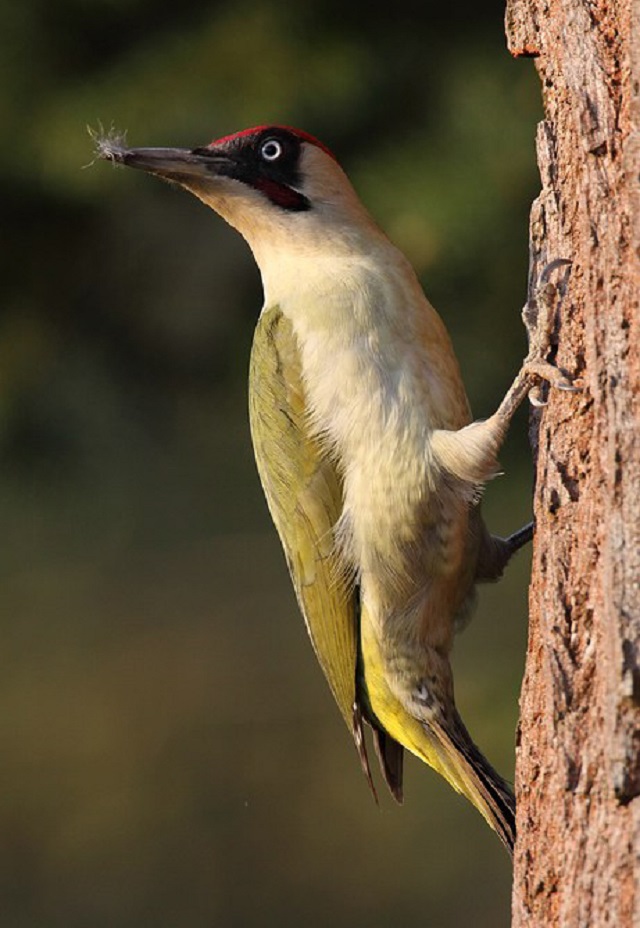
|
1 |
| Woodlark | Lullula arborea | small bird singing a flute-like song high above an open area in the forest is a woodlark. |

|
2 |
| Chiffchaff | Phylloscopus collybita | They are small, greyish-green songbirds that are very similar in appearance to the Willow Warbler. The best way to tell them apart is by song: the chiffchaff says its name 'chiffchaff, chiffchaff' over and over again while the song of the willow warbler is a soft and gentle whistle, falling from high to low notes. |
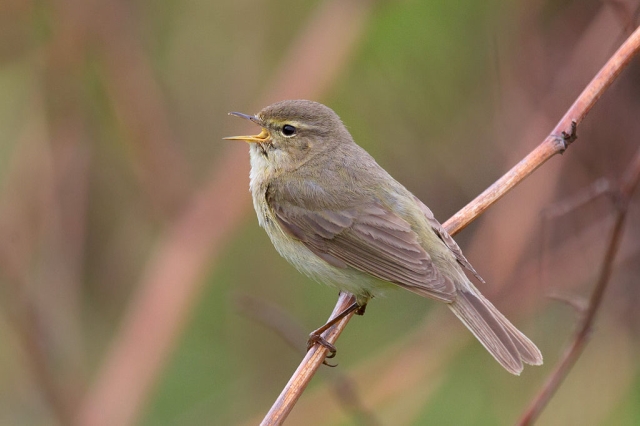
|
3 |
| Willow Warbler | Phylloscopus trochilus | Willow warblers are summer visitors from Africa. The song of the willow warbler is a soft and gentle whistle, falling from high to low notes. |
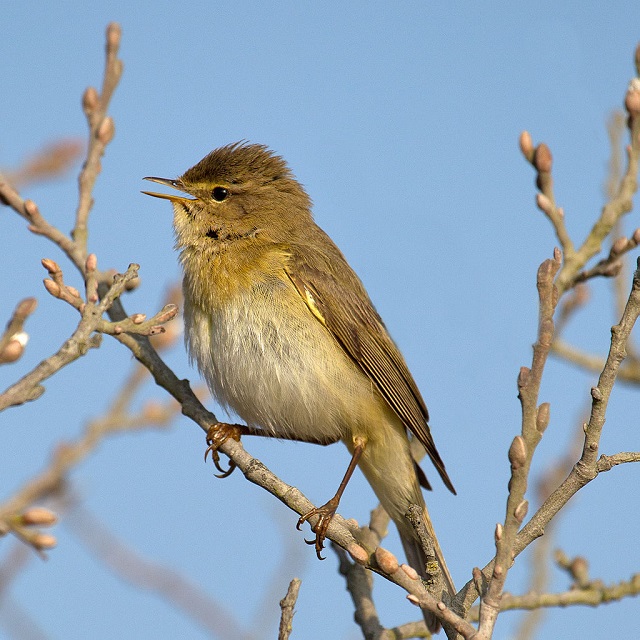
|
4 |
| Blackcap | Sylvia atricapilla | Blackcaps used to be solely summer migrants but now many birds are resident throughout the year, probably as a result of climate change. They are small, mostly grey birds and the adult male has a black cap and females have a chestnut-brown cap. It has a beautiful fluting song which is even compared to the nightingale's. |
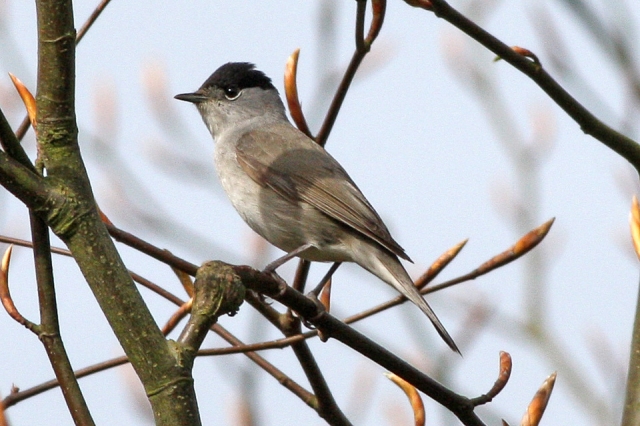
|
5 |
| Crossbill | Loxia curvirostra | This green and red bird gets its name from its crossed beak, specially adapted to prize seeds out of spruce and pine cones, its favoured food. Even its feet are shaped to grasp and hold the pine cones and it can look like a small parrot as it moves through the dense branches of the conifers. Listen out for the 'chip-chip' call and look for them high up in the tree canopy. If there is a puddle nearby, you may see them come down to drink because the pine cone resin makes them very thirsty. |
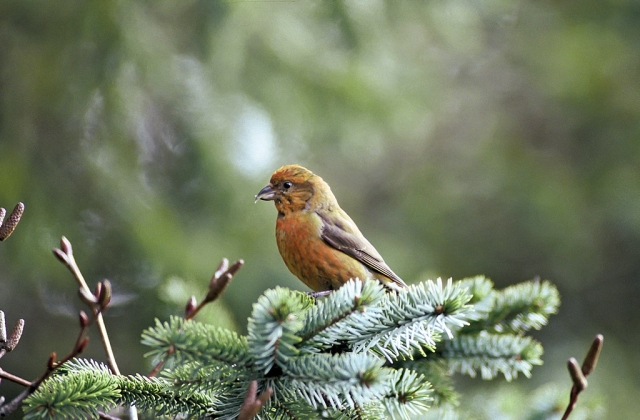
|
6 |
| Nuthatch | Sitta europaea | The nuthatch is a small bird, blue-grey above and whitish below, with chestnut on its sides and under its tail and a black stripe on its head. It lives in large, mature trees, feeding on insects, larvae, and spiders, beech-mast, acorns and hazelnuts and nesting in tree holes. You can often hear its loud 'chit , chit, chit, chit' call and its trilling song but seeing it is less easy as it climbs up, down and around the tree trunk and branches using its powerful toes. It is the only British bird which descends a tree-trunk headfirst. |
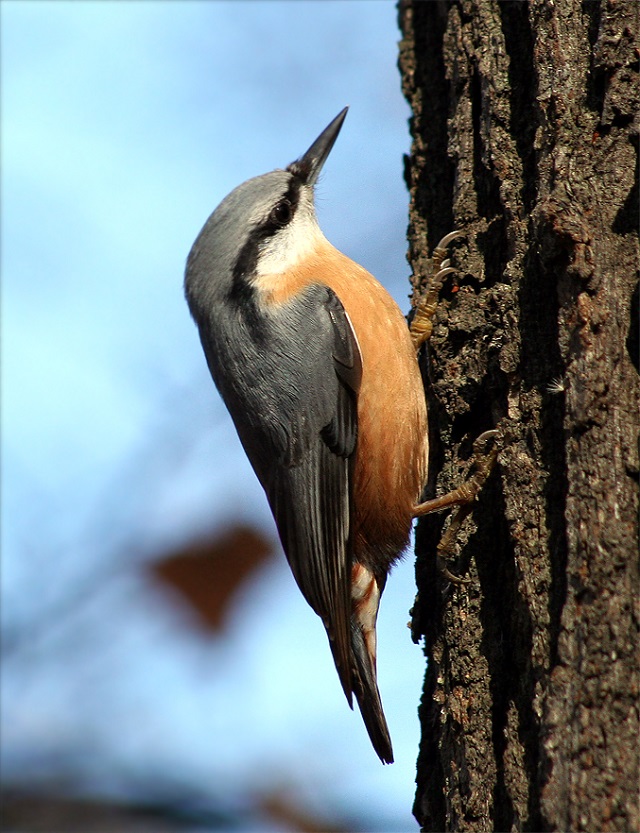
|
7 |
| Long-Tailed Tit | Aegithalos caudatus | A tiny, round bird with a very long thin tail whose plumage is a mixture of black, white and pink. Long-tailed tits are always on the move, flying from tree to tree in small flocks, incessantly calling 'see, see, see' and there one minute but gone the next. |
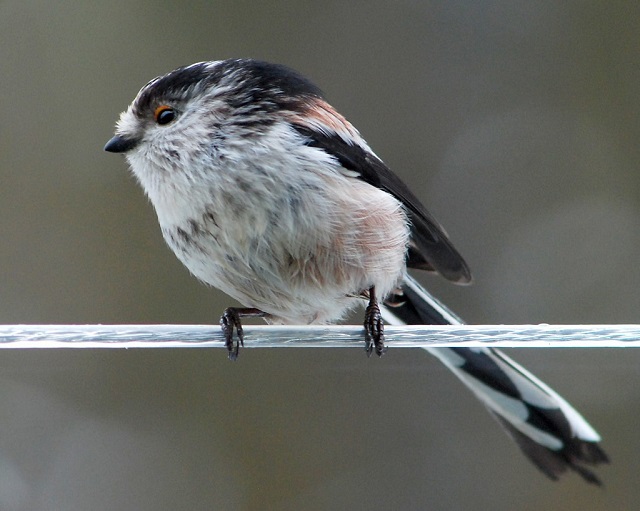
|
8 |
| Nightjar | Caprimulgus europaeus | If you are in the Forest at dusk, you might hear a reeling, churring sound and even see a hawk-like bird with a soft and jerky flight - this is a nightjar. Nightjars are rare summer visitors, returning to the forest in May to breed and then leaving to winter in Africa by mid-September. |

|
9 |
| Jay | Garrulus glandarius | If you see a bird flying between the trees with black wings with pale blue and white patches and a distinctive flash of white on its rump and giving a scratchy, screaming call, it is a jay. |
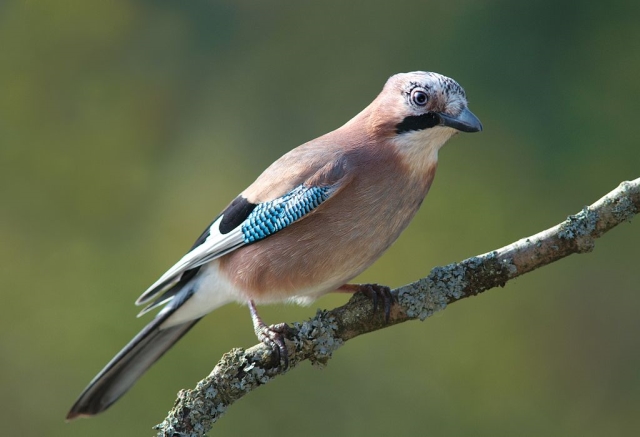
|
10 |
| Hobby | Falco subbuteo | The hobby is another summer visitor which comes to the Forest from Africa. If you see a small, dark, sleek falcon twisting and turning acrobatically and catching insects in its talons and eating them on the wing, you are watching a hobby. |
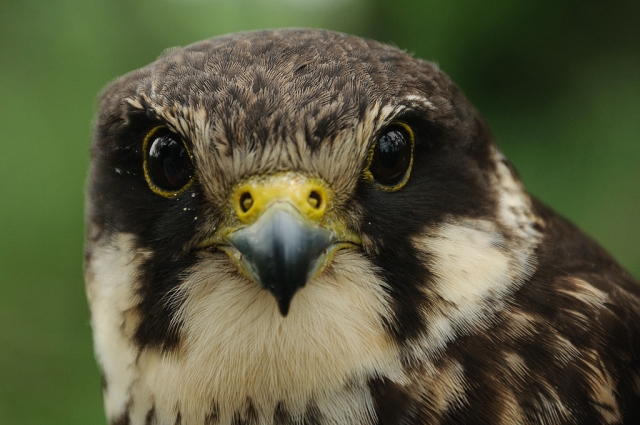
|
11 |
| Buzzard | Buteo buteo buteo | Twenty years ago, buzzards were quite a scarce sight in Norfolk and Suffolk. Now they breed in the Forest and can be seen on most days, soaring high in the sky. They have broad, rounded wings and a short, rounded tail but it is often their cat-like 'mew' call which makes you look up and then see them. |
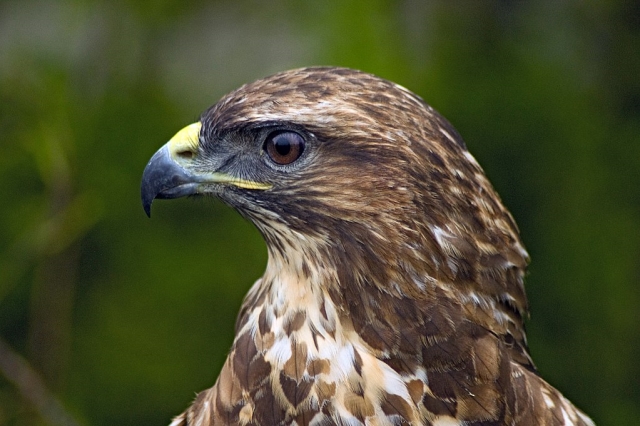
|
12 |
| Goshawk | Accipiter gentilis | These birds are powerful predators and have strong beaks and talons but only a few pairs nest in the Forest, often high up in Douglas Firs. They hunt smaller birds at high speed, weaving in and out of the trees and catching their prey in flight. |
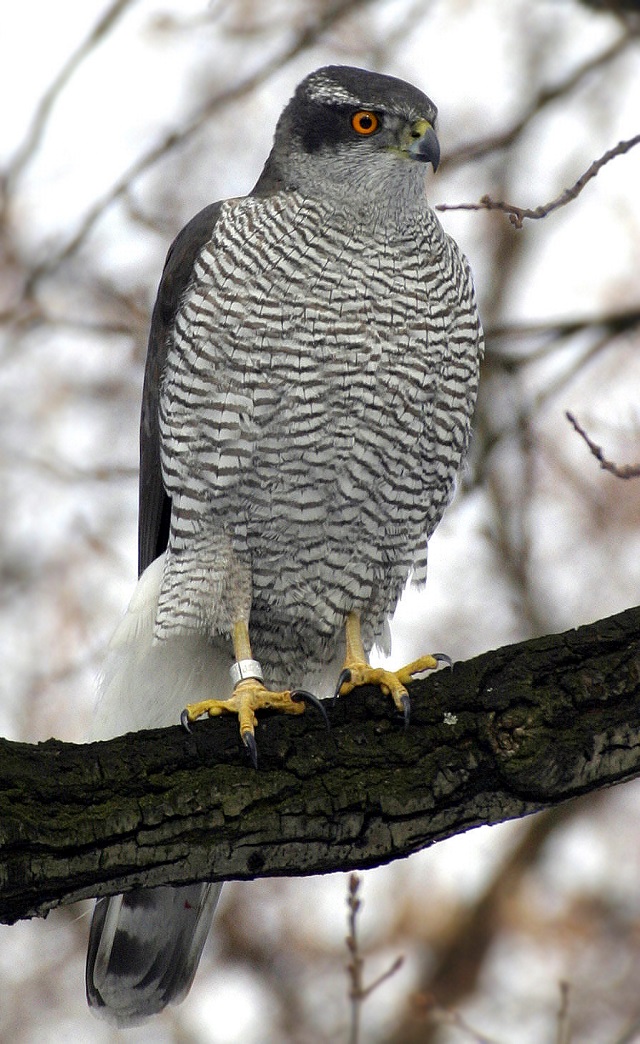
|
12 |
1User:Hans-Jorg Hellwig [CC BY-SA 3.0], via Wikimedia Commons
2Jan Svetlik [CC BY-SA 2.0], via Wikimedia Commons
3Andreas Trepte [CC BY-SA 2.5], via Wikimedia Commons
4Andreas Trepte [CC BY-SA 2.5], via Wikimedia Commons
5Ron Knight from Seaford, East Sussex, United Kingdom [CC BY 2.0], via Wikimedia Commons
6Dave Menke [Public domain], via Wikimedia Commons
7Pawel Kuzniar [CC BY-SA 3.0], via Wikimedia Commons
8Dave Croker Long tailed Tit on a washing line, via Wikimedia Commons
9Durzan cirano [CC BY-SA 3.0], via Wikimedia Commons
10I, Luc Viatour [CC BY-SA 3.0], via Wikimedia Commons
11Grzegorz Karg [CC BY-SA 3.0], via Wikimedia Commons
12Spencer Wright from North Walsham, England [CC BY 2.0], via Wikimedia Commons
13Norbert Kenntner, Berlin [CC BY-SA 3.0], via Wikimedia Commons